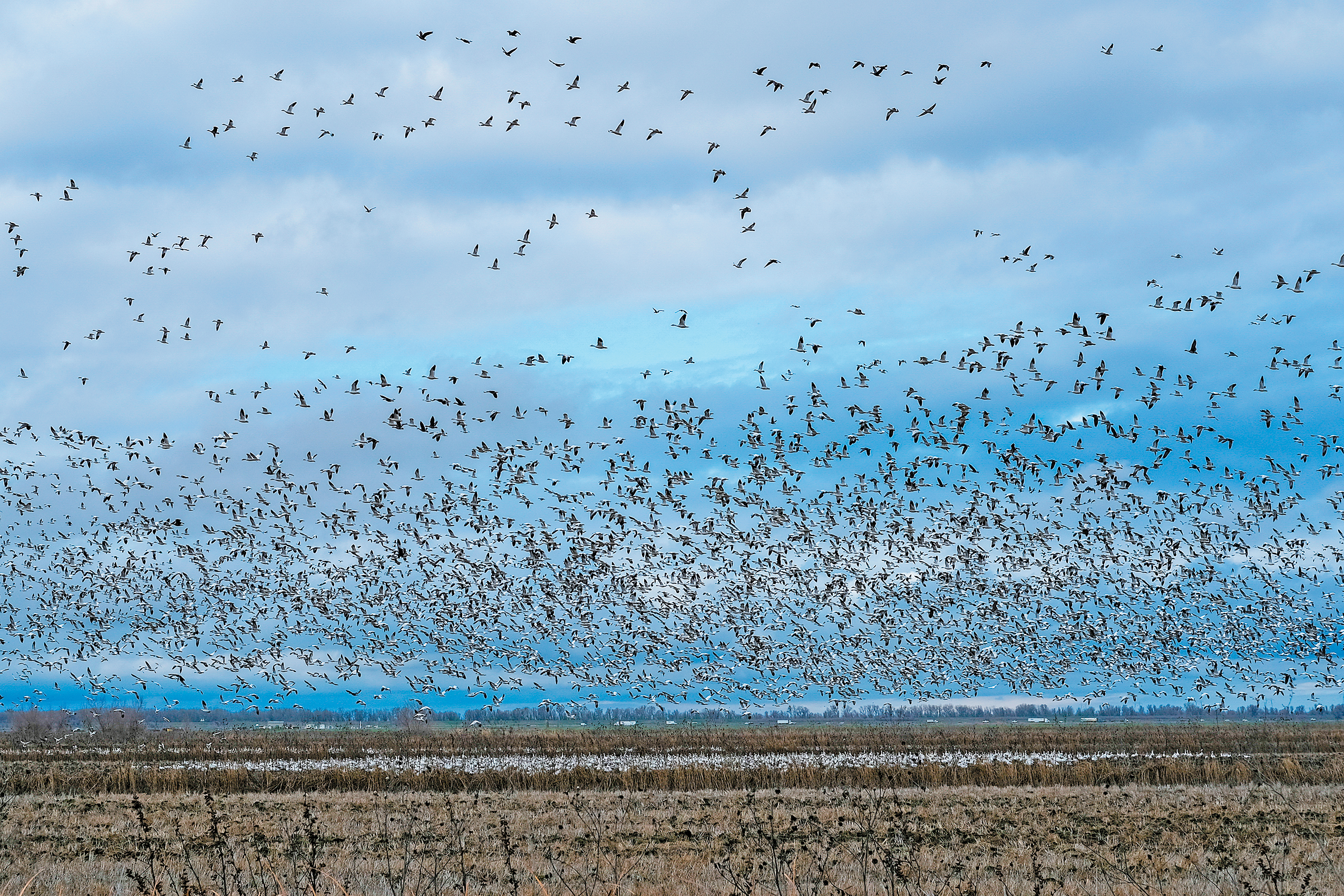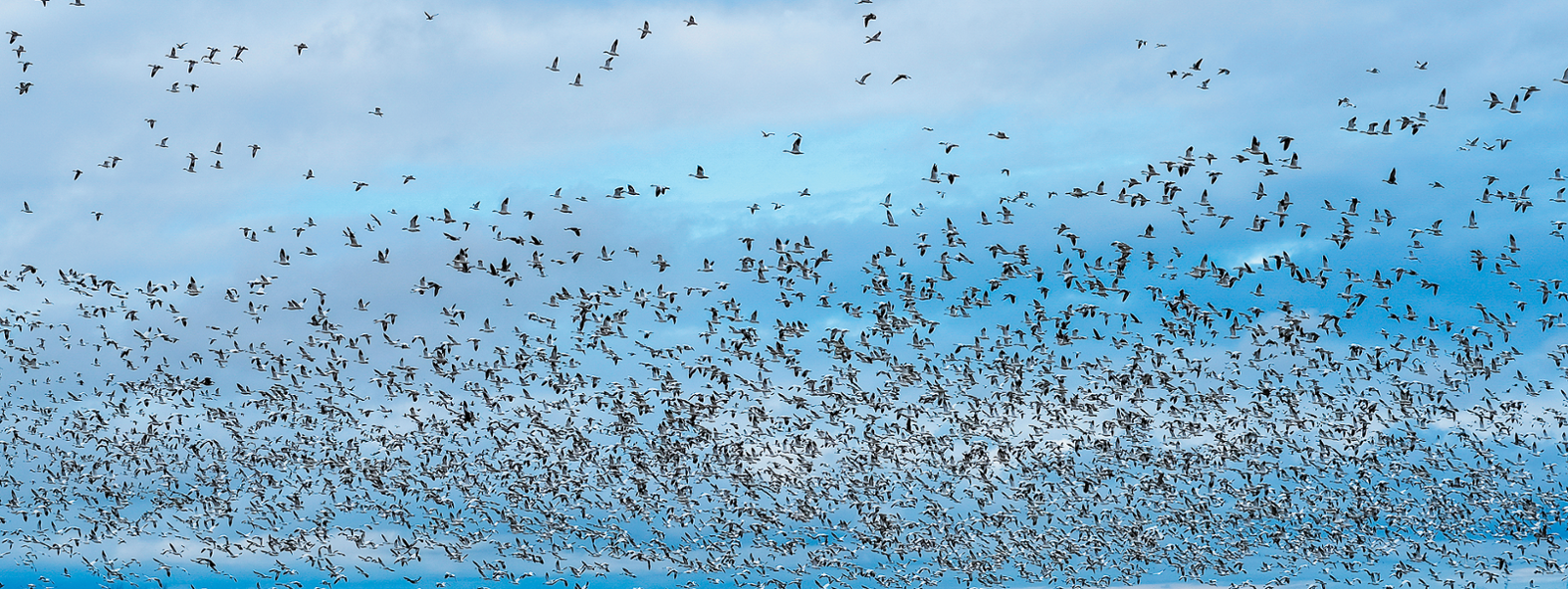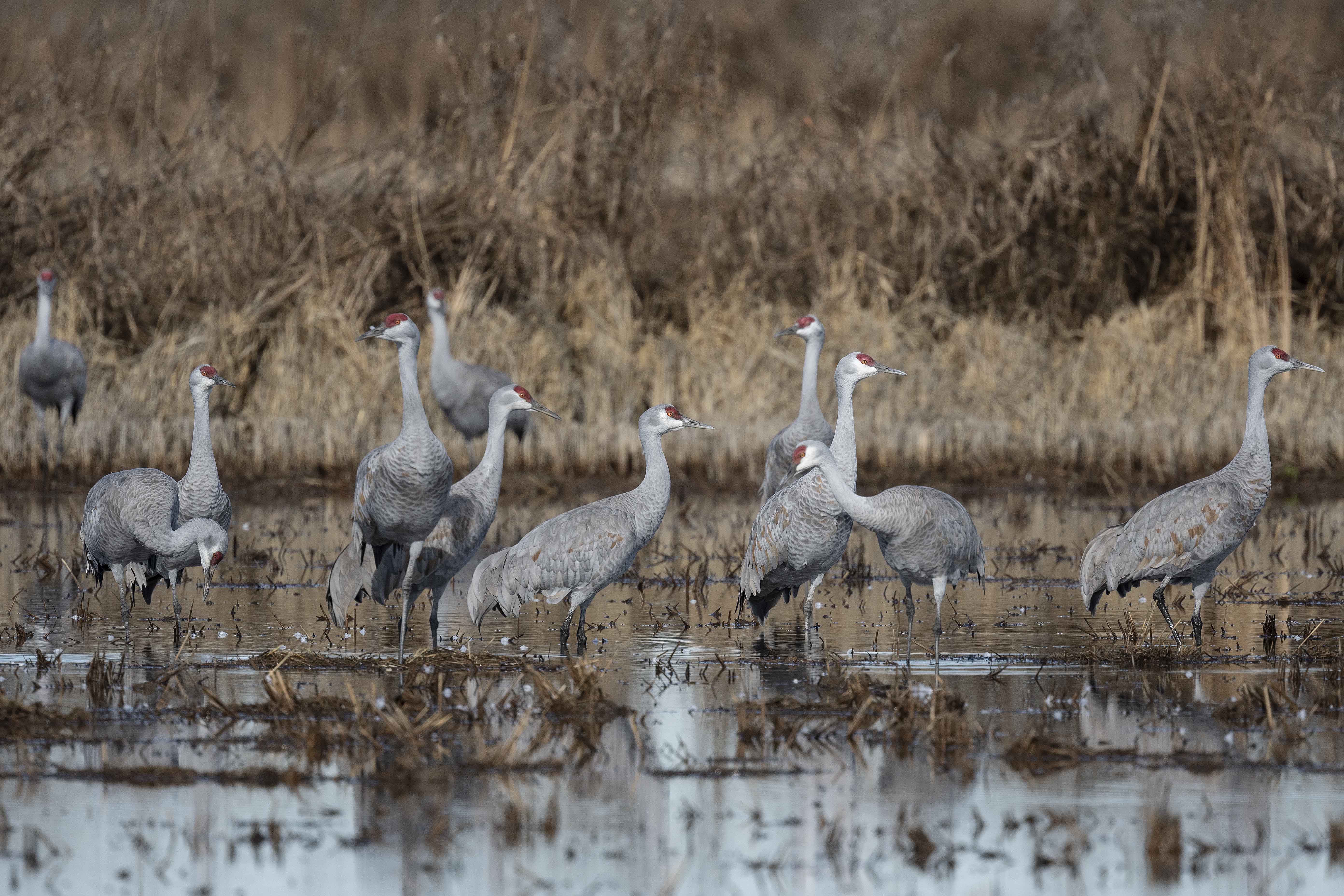Waterfowl flock again to valley rice fields

Hundreds of Snow Geese take off from a rice field in Yolo County. During the winter, rice farmers in the Sacramento Valley flood their fields to provide wetland habitat for waterfowl migrating along the Pacific Flyway. Ample water supplies this winter have brought back large numbers of birds.
Photo/Caleb Hampton


Photo/California Rice Commission
By Caleb Hampton
The return of fully planted rice crops to the Sacramento Valley following years of drought has restored another essential feature of the region. After harvest, reservoirs replenished by last year’s historic storms enabled farmers to flood more of their fields this winter, creating wetland habitat for migrating waterfowl.
Right now, “You can’t drive down the road without seeing thousands of geese,” said Kim Gallagher, who grows rice along Highway 45 in Yolo and Colusa counties and participates in government-funded programs that incentivize rice farmers to flood their fields in the winter for wildlife conservation.
Birds migrating along the Pacific Flyway have stopped in the Central Valley for centuries, resting and refueling for their journey north in the spring. But since the Gold Rush, California has lost 95% of its wetlands to development.
“The result of that has been a loss of the habitat these birds depended on,” said Jeff McCreary, director of operations for Ducks Unlimited’s western region.
Sacramento Valley rice fields are an exception, generating economic activity while restoring crucial wetlands. Today, around 300,000 acres of the valley’s rice paddies are flooded each winter to provide food and shelter for 7 million ducks and geese, according to the California Rice Commission. More than 200 species of wildlife, including threatened species such as Sandhill Cranes, rely on the fields.
Especially over the past decade, state and federal programs have been developed to incentivize winter flooding, defraying some of the cost, and rice farmers have embraced their role in wildlife conservation.
“Seeing the rice in the summer and the waterfowl in the winter are two sides of the same coin,” Gallagher said. “In my book, it completes the process.”
Two years ago, drought prevented farmers from planting about half of the Sacramento Valley’s 500,000 acres of rice, especially on the west side of the valley where Gallagher farms, and limited participation in winter flooding programs.
“The reduced rice acreage resulted in a smaller footprint of waterfowl habitat in the valley,” said Elliott Matchett, biologist for the U.S. Geological Survey, who monitors waterbird populations across the Pacific Flyway.
The farmers noticed their absence. Usually, the birds “make a hellacious racket,” as one farmer put it with admiration, but that winter, “it was quiet on this side,” Gallagher said. A year ago, growers said the outlook was bleak when harvest ended, limiting flooding from October until the new year when atmospheric river storms inundated much of California.
Now, ample water supplies from those storms have restored both rice and habitat. This year, the fields are “packed wall to wall with ducks and geese,” Gallagher said. “It’s a huge contrast.”
The number of acres enrolled in one winter flooding program, the California Winter Rice Flooding Incentive Program, increased from around 20,000 last winter to more than 60,000 this winter, according to data collected by the California Rice Commission.
Alex Struckmeyer, who grows rice in Colusa County, flooded his fields for the first time this winter. “The drought was pretty arduous for us,” Struckmeyer said. Since he flooded his fields a few months ago, he has seen “more birds on this ranch than ever before.”
Last week, hundreds of Sandhill Cranes descended on the fields outside Struckmeyer’s home. “It’s magical,” he said. “It adds a little extra joy to this already beautiful landscape.”
Waterfowl take enormous benefit from the rice paddies, stocking up on more than half the calories they need to make their 2,000-mile return journey in the spring. “They use the rice fields to store up body fat to fuel their migration up north,” said McCreary, the Ducks Unlimited director.
Several winter flooding programs have been developed to meet the needs of specific types of wildlife and the abilities of differing farm operations.
Jon Munger, vice president of operations at Montna Farms in Sutter County, is participating in a federally funded program that creates varying floodplain depths in rice fields at the end of the winter flooding season.
“The month of February is a critical time for a lot of these birds that are moving through,” Munger said. “I really like to see us being able to provide that varying habitat. It benefits not just ducks and geese but all sorts of shorebirds. When you get the really shallow mudflats, you’re attracting a lot of the little wading birds—the dowitchers and other little guys that visit those fields.”
The birds also play a role in preparing the fields for planting. As they feed on leftover grains and insects, they mash up rice straw that must be decomposed before the next crop can go in the ground.
“It’s part of the whole ecosystem,” Gallagher said. “We get rid of our rice straw, which is the goal so that we can plant rice next year, and we’re also creating food for the waterfowl.”
Previously, Sacramento Valley rice farmers mostly burned their fields to get rid of the straw. Since 1992, a state law has limited rice straw burning, and growers have increasingly adopted winter flooding to decompose their straw.
“We’ve pushed for more people to flood their fields post-harvest, and many more growers seem to be doing that,” said Katie Cahill, communications manager for the California Rice Commission. The incentive programs are typically oversubscribed, she said, with more farmers wanting to flood than can be funded.
After the drought, last year’s full rice crop brought back farming, hauling, processing and other ancillary jobs that depend on the sector. Farmers and wildlife experts said the return of waterfowl this winter is also part of the valley’s economic recovery.
“The Sacramento Valley hosts one of the greatest concentrations of wild waterfowl in the world,” Cahill said. “It brings in people from all over the state and across the world.”
Several small towns at the northern end of the Central Valley get important revenue from wintertime wildlife tourism, duck hunting and events such as the Snow Goose Festival, held last week in Butte County, all of which rely on the region’s ricelands.
“The rice in the Central Valley is the anchor of the Pacific Flyway,” McCreary said. “There’s a lot of societal benefits from it.”
(Caleb Hampton is an assistant editor of Ag Alert. He may be contacted at champton@cfbf.com.)




